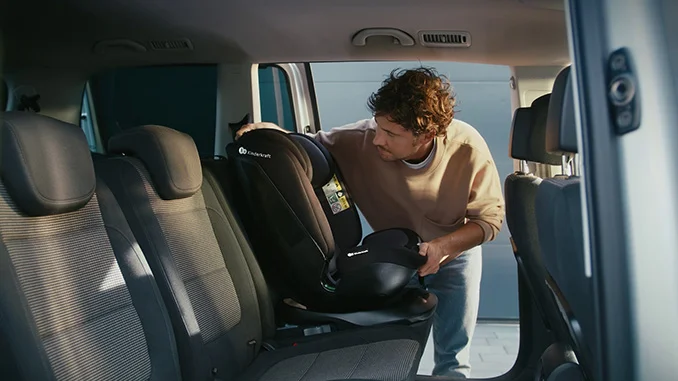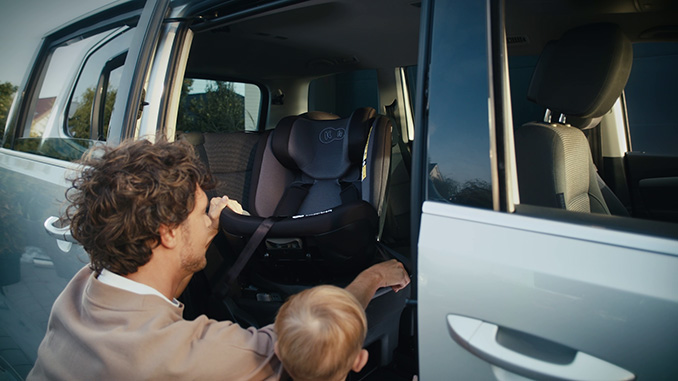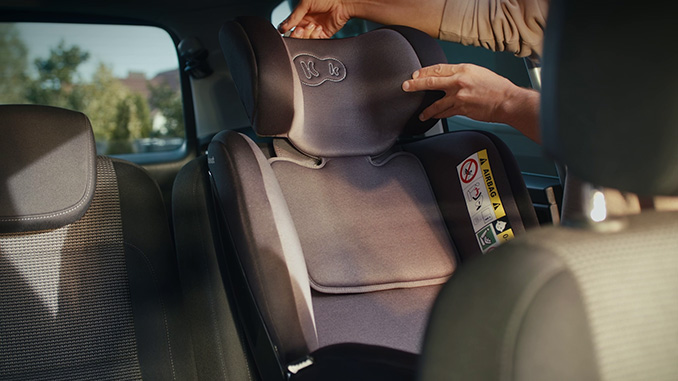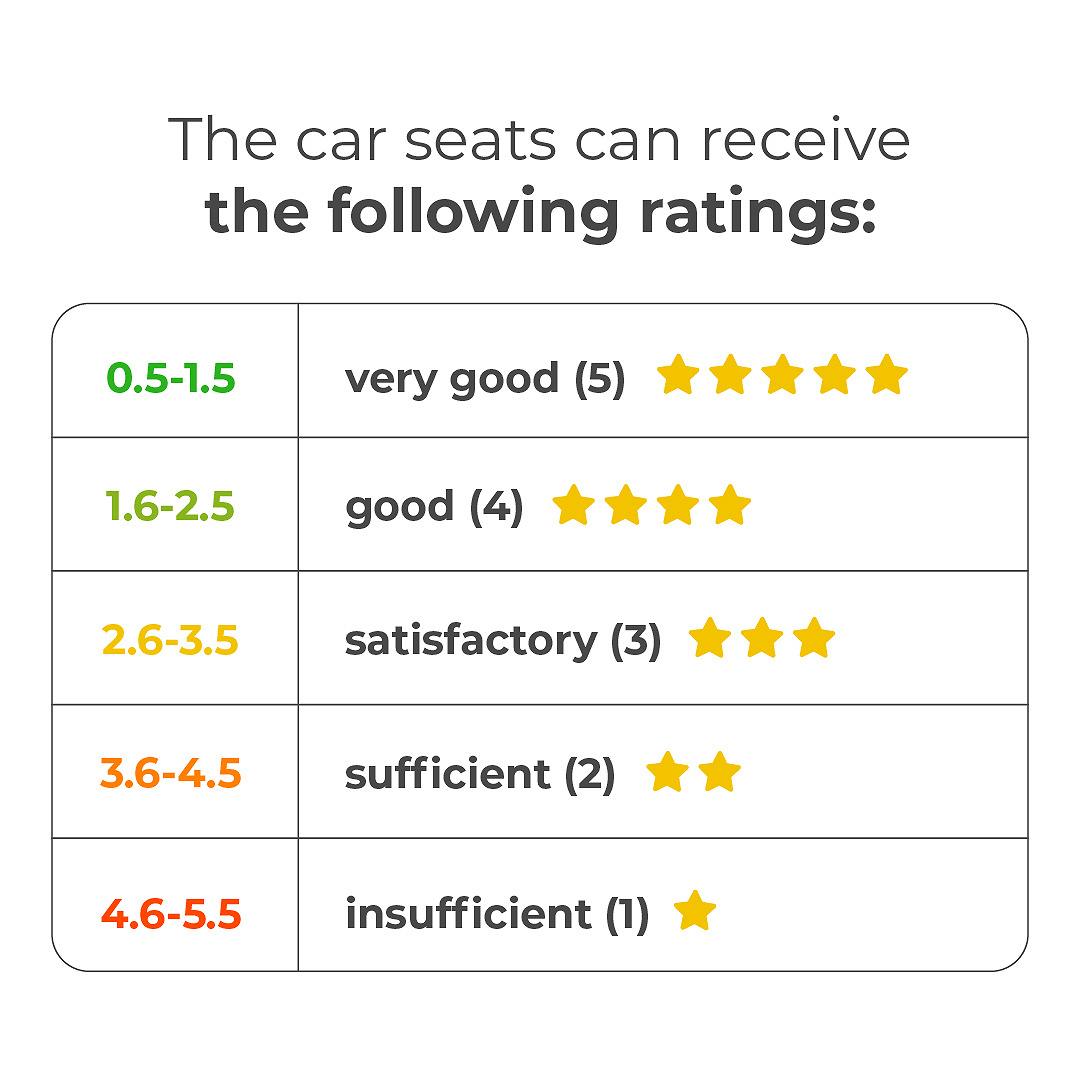Why don't all car seats are tested by the ADAC?
Reading time: 8 minutes

Many parents have heard about the crash tests that car seats undergo, and the ADAC ratings that selected products get. A positive ADAC rating is something that car seat manufacturers boast about - the tests conducted by this institution are very rigorous and detailed. But do you know what exactly makes up the final rating of a car seat, tested by this institution, and what criteria are taken into account during the evaluation?
In this article, we will also comment on whether ADAC testing is an element that should determine the purchase of a car seat, and whether car seats which haven't been tested by ADAC are less safe than those which have been. We hope that the answers in this text will make your quest for the perfect car seat easier, and most importantly, that it will expand your knowledge of ADAC.

What are ADAC tests?
ADAC (Allgemeiner Deutscher Automobil-Club) is an independent German institute, which conducts extremely strict car seats tests within its own laboratories. Car seats are examined not only in crash tests, conducted at high speeds, but other elements are also tested, such as installation, the absence of harmful or flammable materials used in the production of the seat, or the stability of the attachment.
What's important: ADAC is an independent organization! Car seats are selected based on the popularity of the product and brand in specific markets - no manufacturers can summit a car seat application!
The selection is not done by ADAC itself, but by the consortium ICRT* which selects the products during 2 period of the year after conducting markets analysis:
• Spring edition: They make their selection and choose the car seats at the end of the previous year. The official publications from ADAC crash-tests are released around the end of May.
• Autumn edition. The selection of the car seats occurs in June. Publications are expected around the end of October.
* Among many European institutions, you can find the Stiftung Warentest (Germany), Testachats (Belgium); Que choisir (France); Consumentenbond (the Netherlands); Which (UK); Altro Consumo (Italy); La fuerza de tus decisiones (Spain). Read more on international-testing.org
There is no way for a manufacturer to influence the organization and its selection - not every car seat will have the chance to be tested. Keep this in mind when comparing tested car seats to those that were not taken for testing.
How are ADAC tests conducted?
ADAC tests car seats at higher speeds than those required by current approval standards. The standards for approval during a frontal crash are 50 km/h, while ADAC tests frontal crashes at speeds of 64 km/h. When it comes to the side impact, their test simulates a near-side collision with penetration (from the side of the seat mounting) at 50km/h. This gives ADAC a more accurate and better test of a car seat's vulnerability to damage.

ADAC - scoring system
ADAC scores the performance of car seats during crashes, but not only this. It also evaluates the stability of the attachment, the ease of installation of the seat, the amount of space in the seat, the weight of the product and the absence of harmful substances in the materials used. ADAC tests are considered the most rigorous in Europe, so the result is often taken as the most important information about the quality and safety of a car seat.
Remember: ADAC is a German organization, so the ratings are adapted to the German points system, where 1 is the highest rating. For the ease of use also the stars often appear next to the rating, which we already look at normally (the more stars - the better).

Note: If ADAC detects unsafe chemical substances in the materials used in the production of the car seat, the rating of the product will be drastically downgraded! Thus, a parent, buying a seat with an ADAC rating, can be sure that the materials and fabrics used are safe.
![]()
FAQ
Why don't all car seats are tested by the ADAC?
One of the most recurrent questions when it comes to ADAC.
ADAC is an independent organization! Car seats are selected based on the popularity of the product and brand in a specific market (Germany). As we mentioned above, a manufacturer solely cannot submit its car seat for testing, as the decision is up to the consortium ICRT to select the car seats after conducting market analysis. They purchase the products from the store and take them to ADAC for testing. This prevents any influence from the manufacturer's side as they can’t possibly submit a different or “better version” of the car seat. This is also the reason why a brand new car seat released to the market won’t get the chance to be tested before its first year at best.
Should a car seat which hasn’t been tested by the ADAC be considered as unsafe?
Whether you buy a car seat tested or not by the ADAC is your decision. But just because a car seat has not been tested by the ADAC it does not mean that it is less safe! Most of the manufacturers design their car seat models to meet the stringent requirements set by ADAC, regardless if their car seat is going to be tested or not.
Remember that ADAC, as an independent institution, selects car seats randomly available from the shelves in stores! Hence, it is likely that the institution didn't take such a car seat for testing yet but it doesn't mean that the car seat wouldn't meet the requirements and get a good rating or it still may be chosen in the future.
From September 2023, seat manufacturers in Europe must comply with the most stringent R129 or i-Size norm developed by the European Economic Commission. This new homologation enhances the level of protection that car seats should provide to children during travel. It replaced the former R44 standard. You can read more about it in this article.
Safety is a key and that’s the reason why as Kinderkraft we are running extra crash-tests beyond the speed limit set by the European norm R129. A large number of our car seats have been crash tested by independent laboratories beyond the tests required by the R129 standards.
Should a car seat tested satisfactory by ADAC be considered safe?
A satisfactory ADAC rating means - in most cases - that the car seat has passed the tests for safety. It is important to keep in mind that the global rating does not only involve the security of the car seat solely but also the components of the following categories: Security, Service, Ergonomics and Pollutants on top of it.
A deficient service or pollutant rating directly affects the overall rating.
In the case of the aforementioned I-GUARD, although the safety rating is 2.0 (good), its global rating is 2.8 (satisfactory) due to a lower rating in the service category because of the product's weight and difficult-to-read instructions. However, this does not mean that the seat is not safe !
As ADAC publishes publicly their official crash-tests rating, anyone can look up on their website to read the details of the rating.
